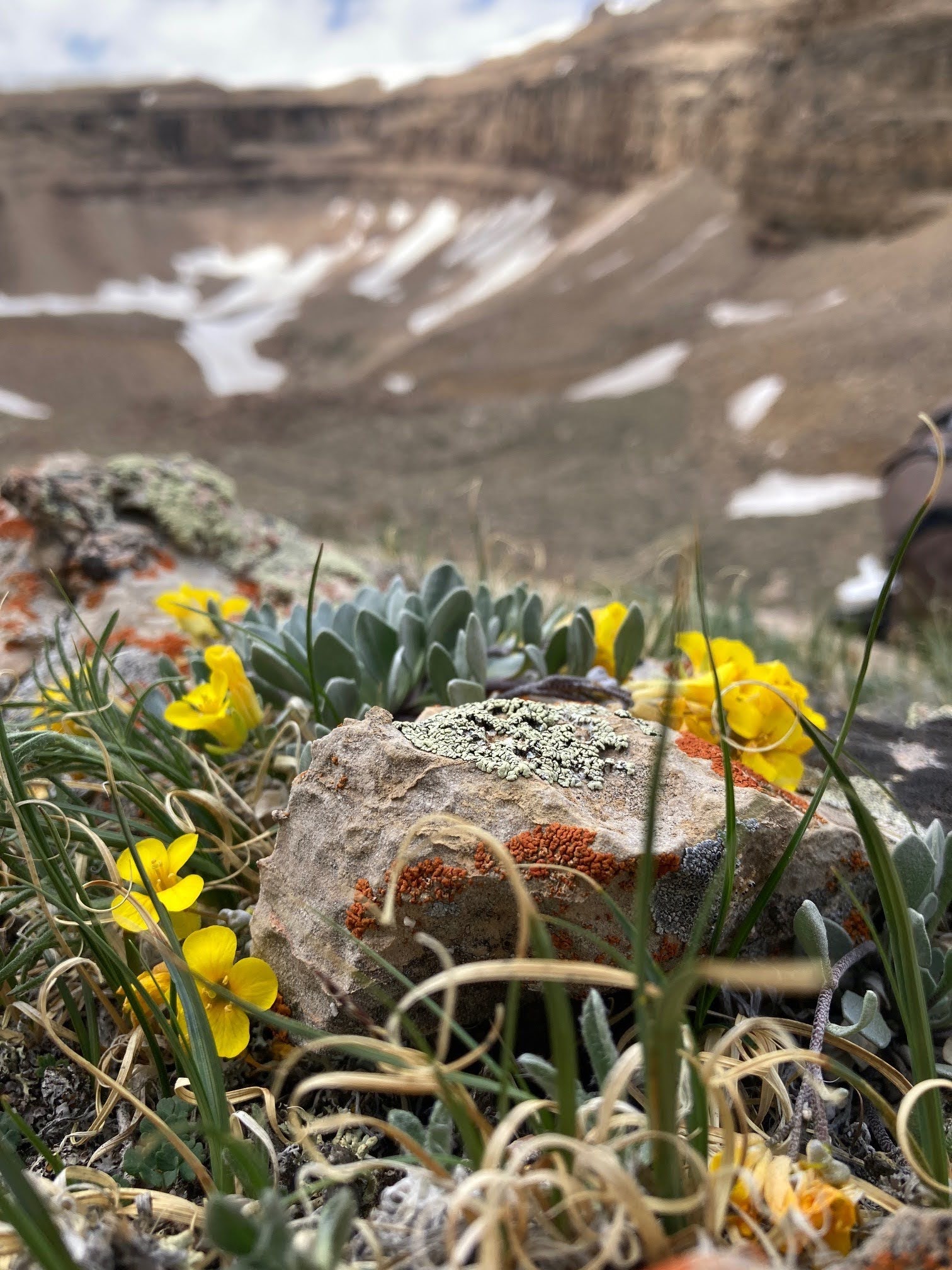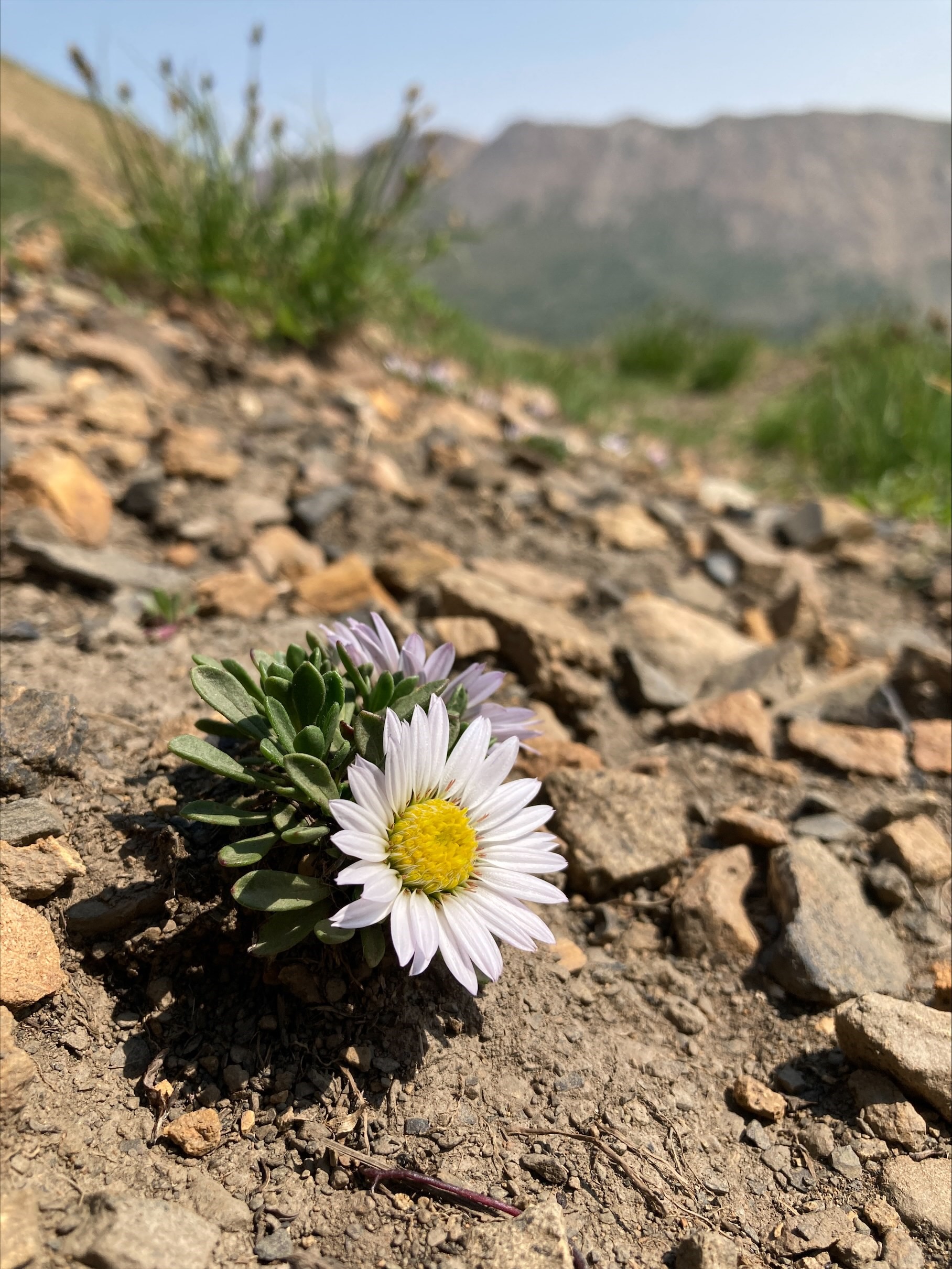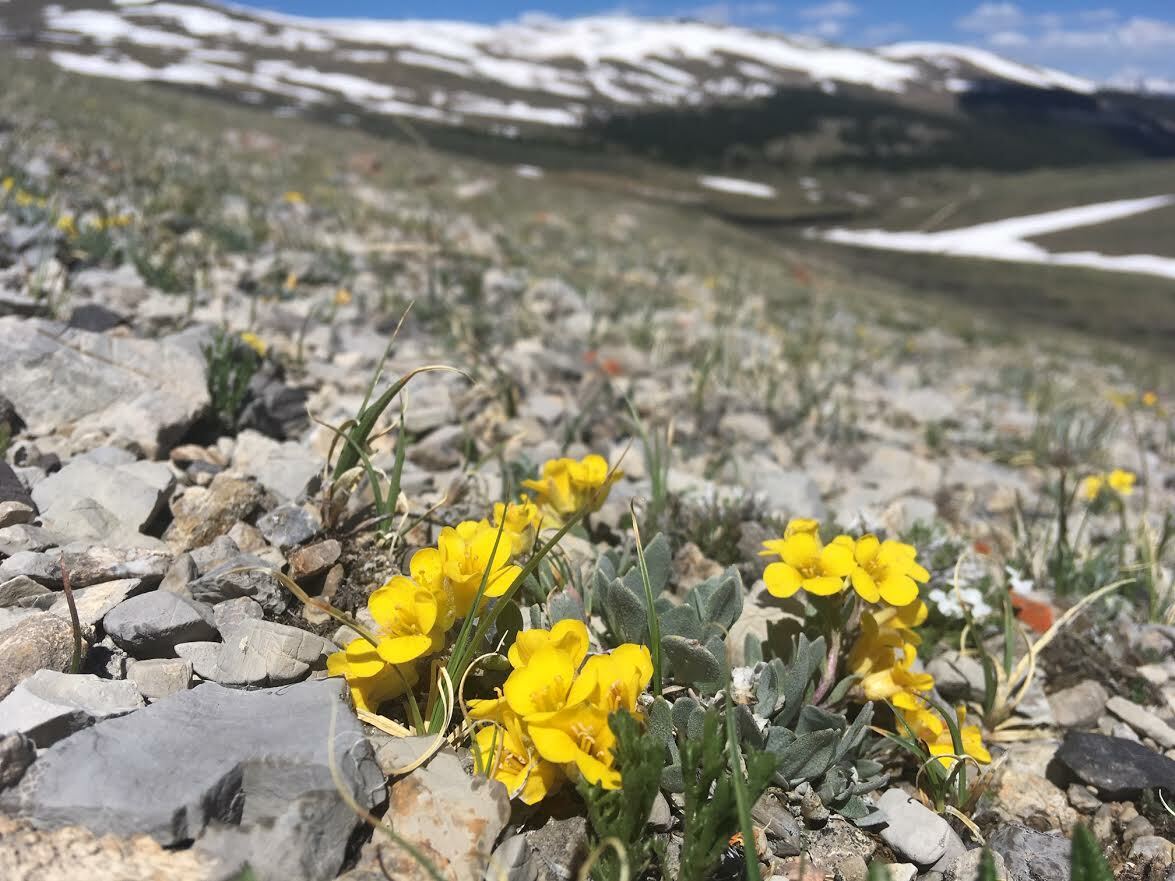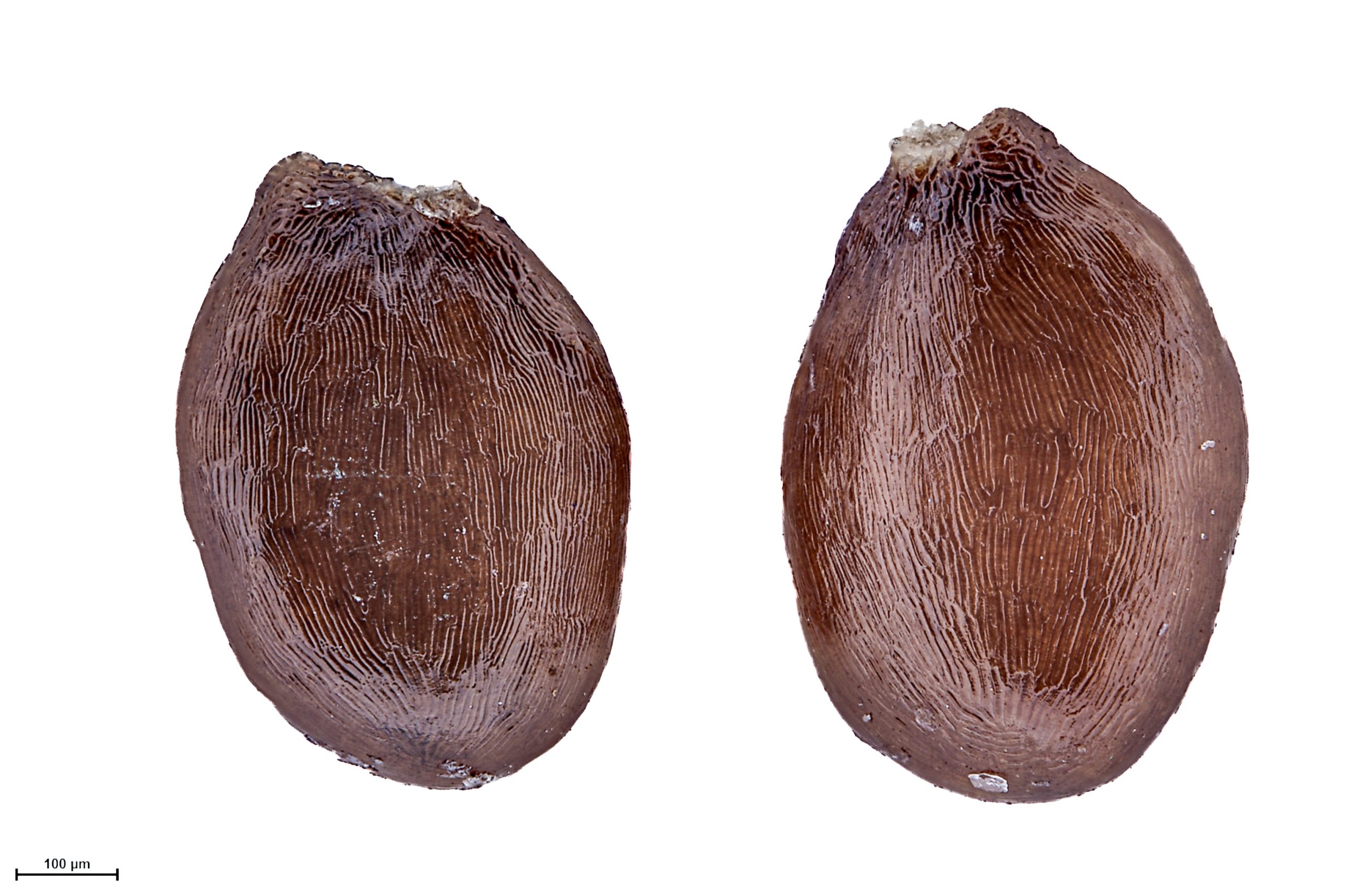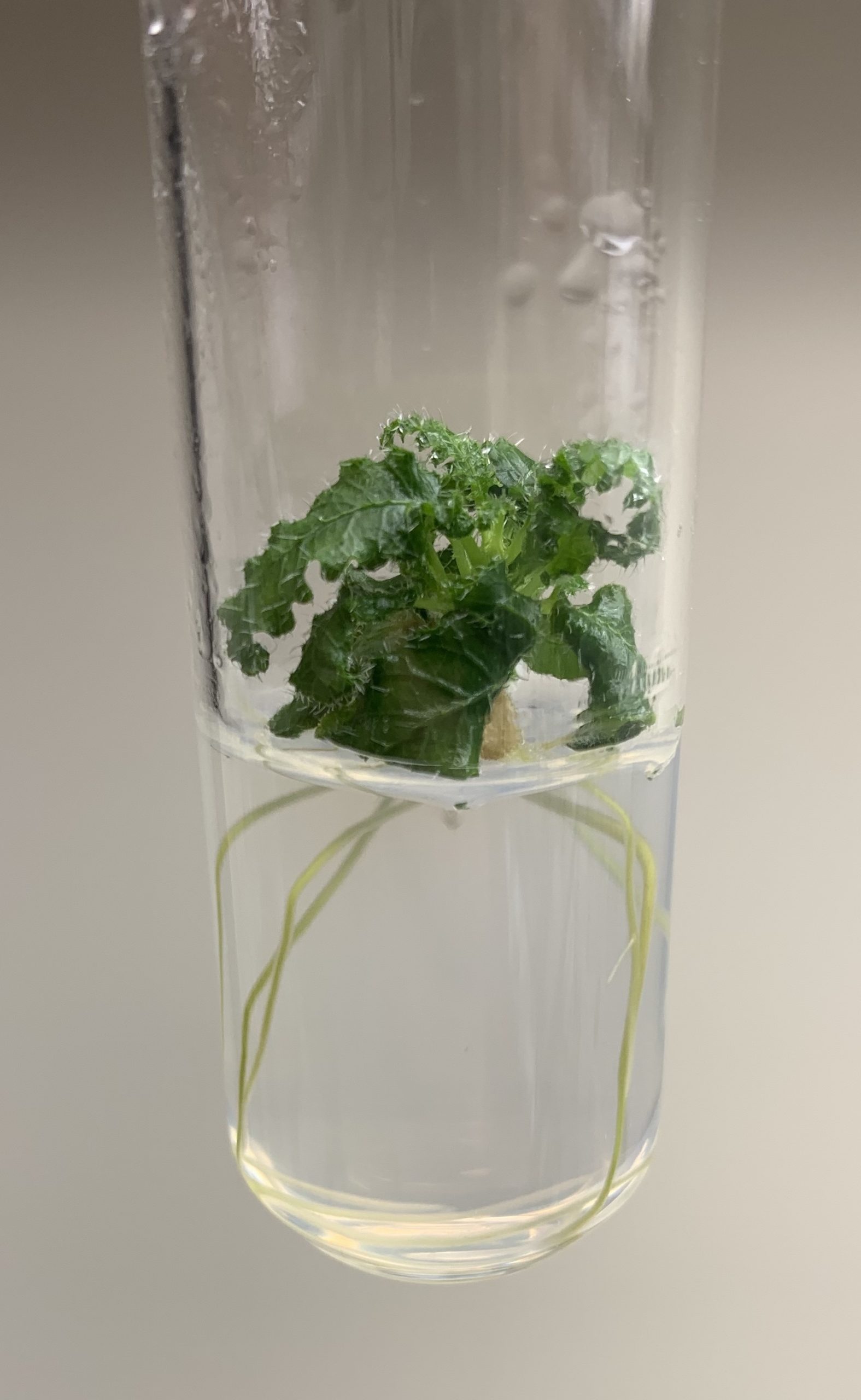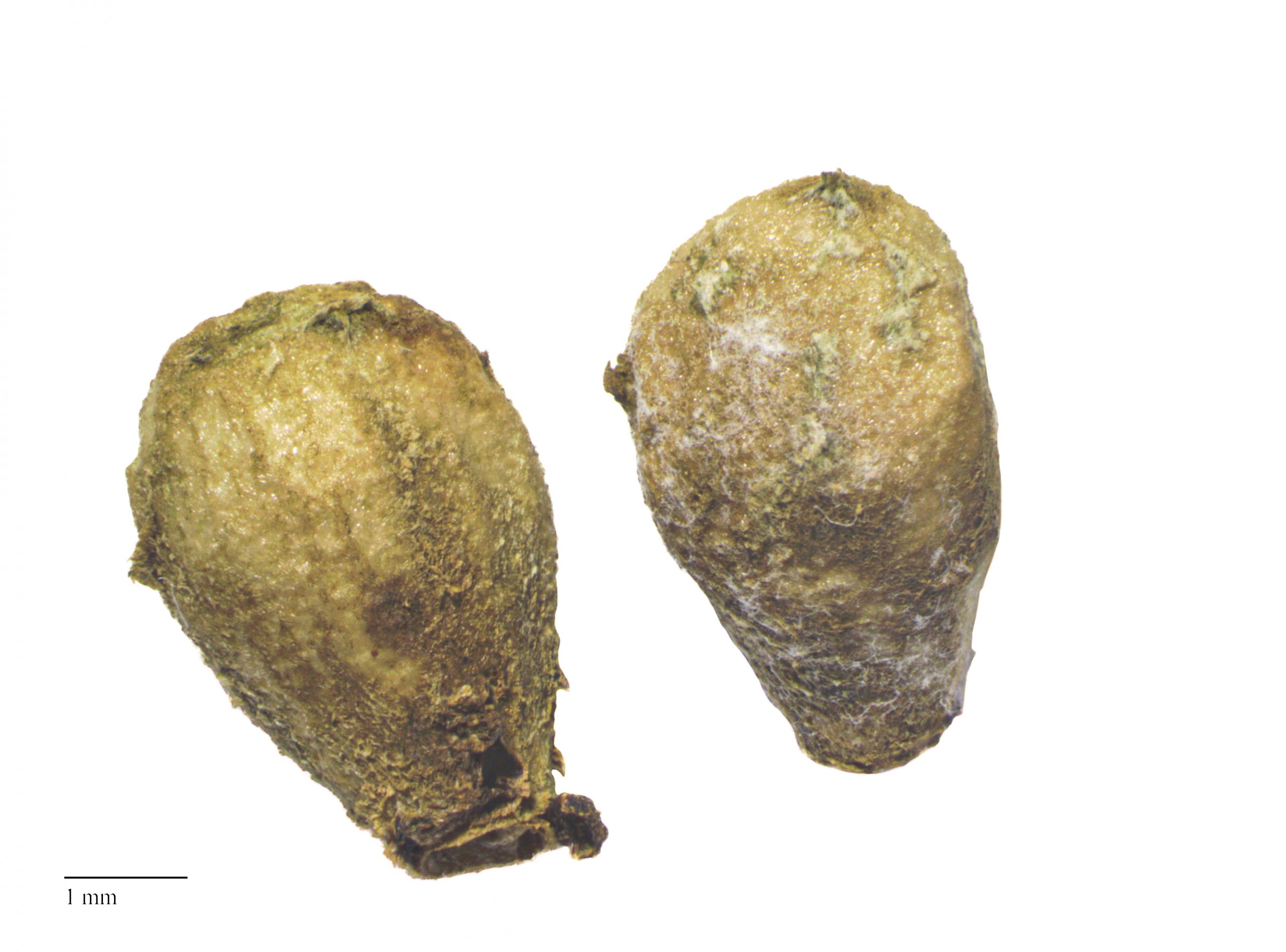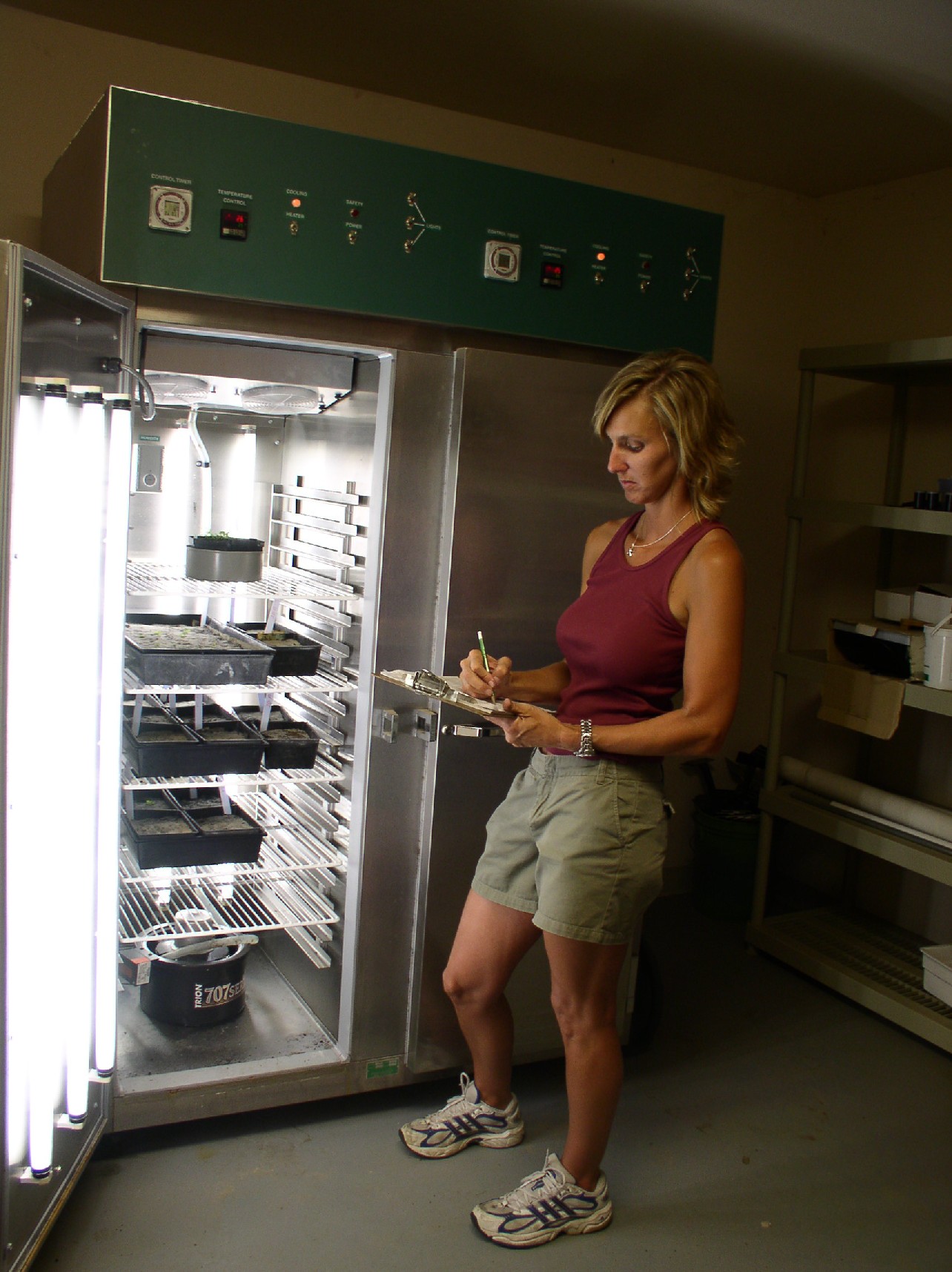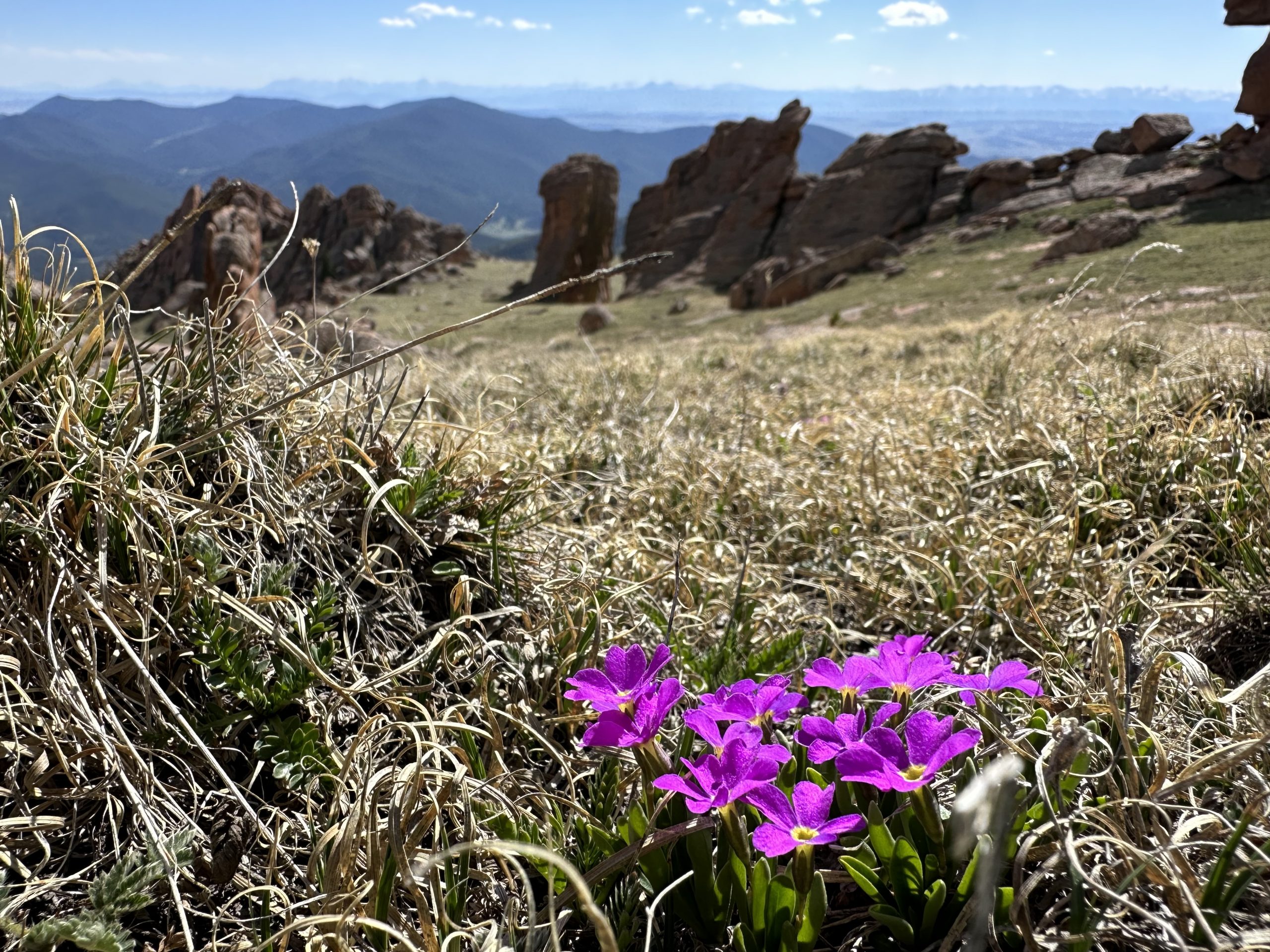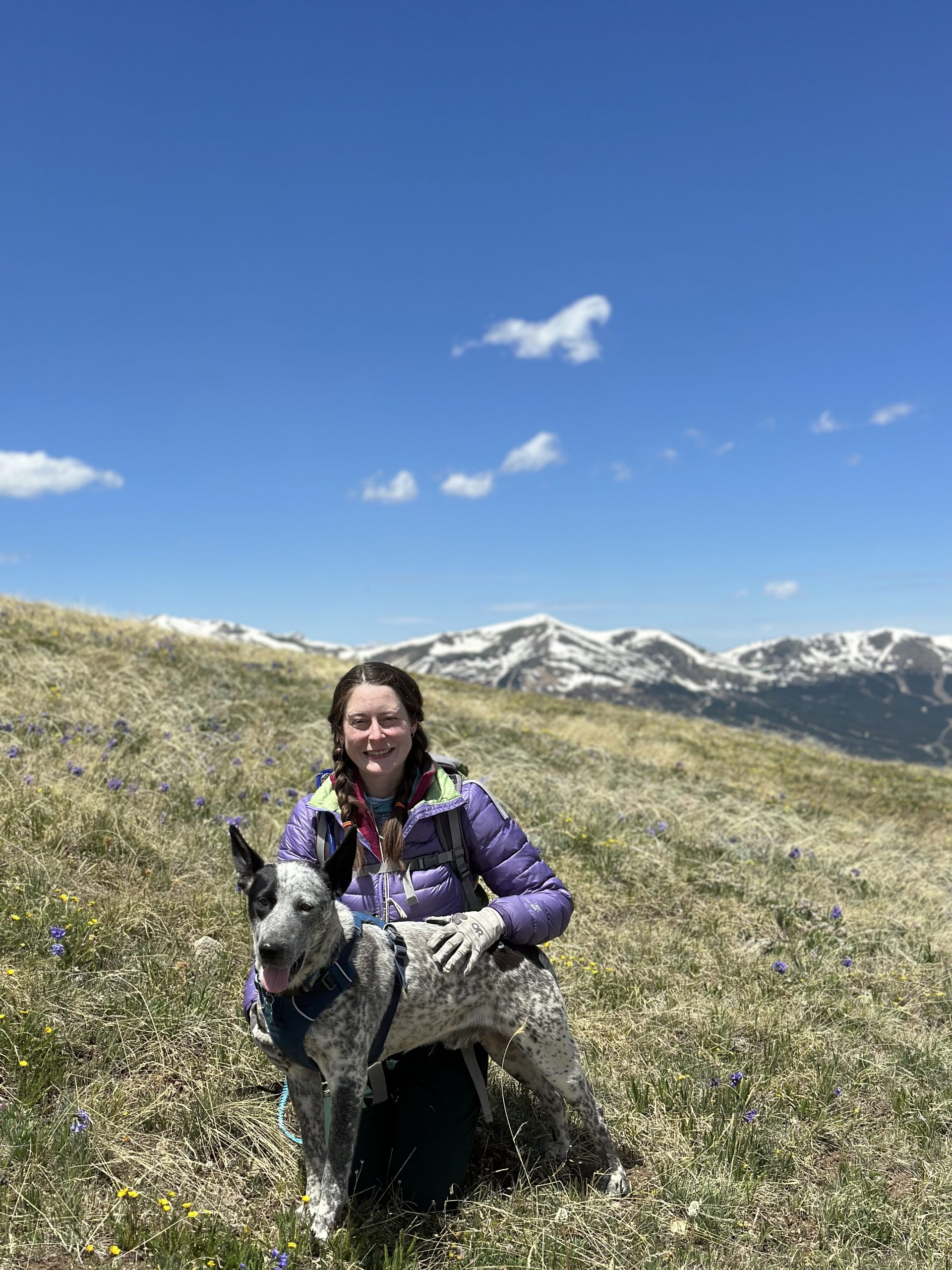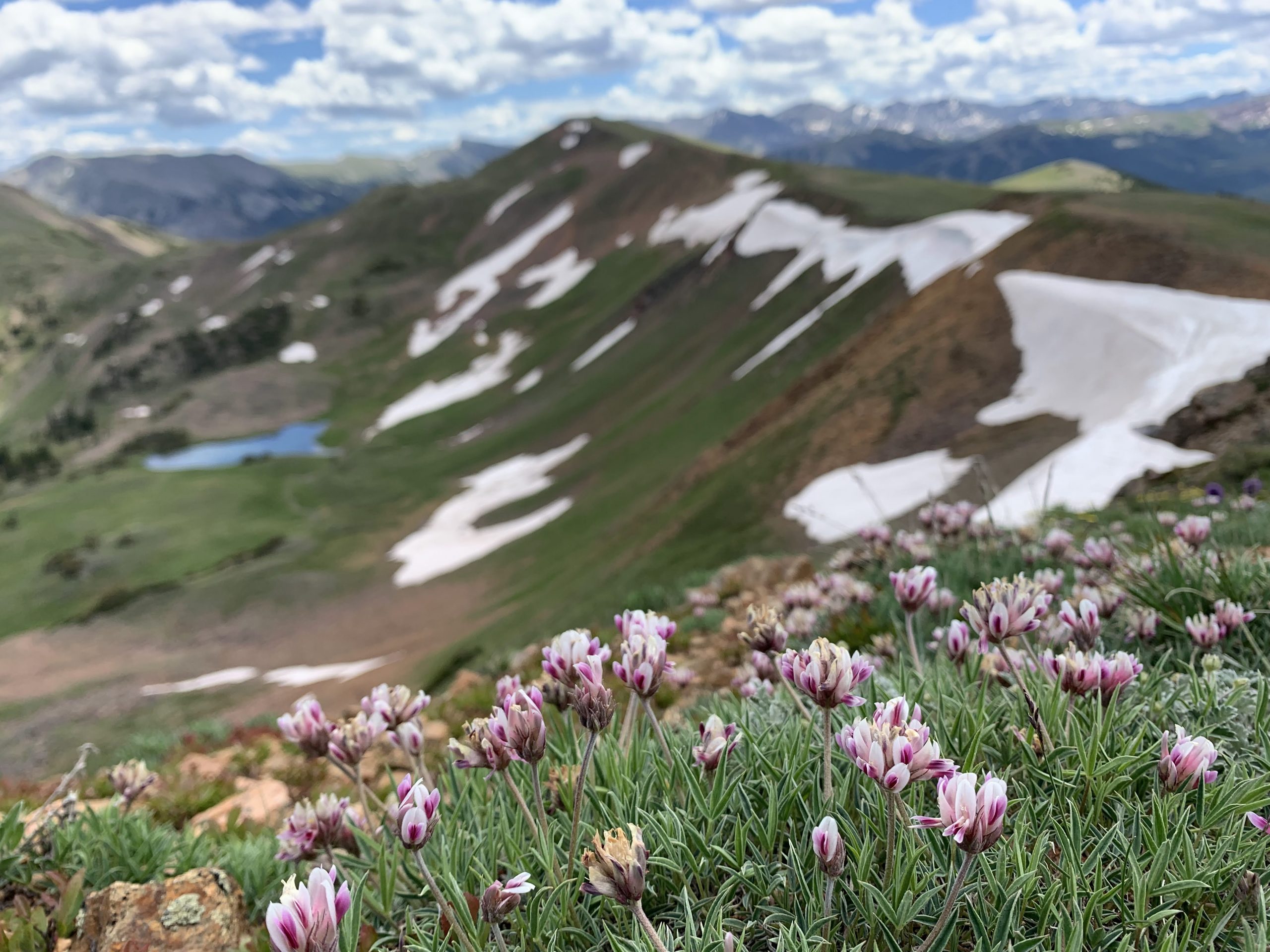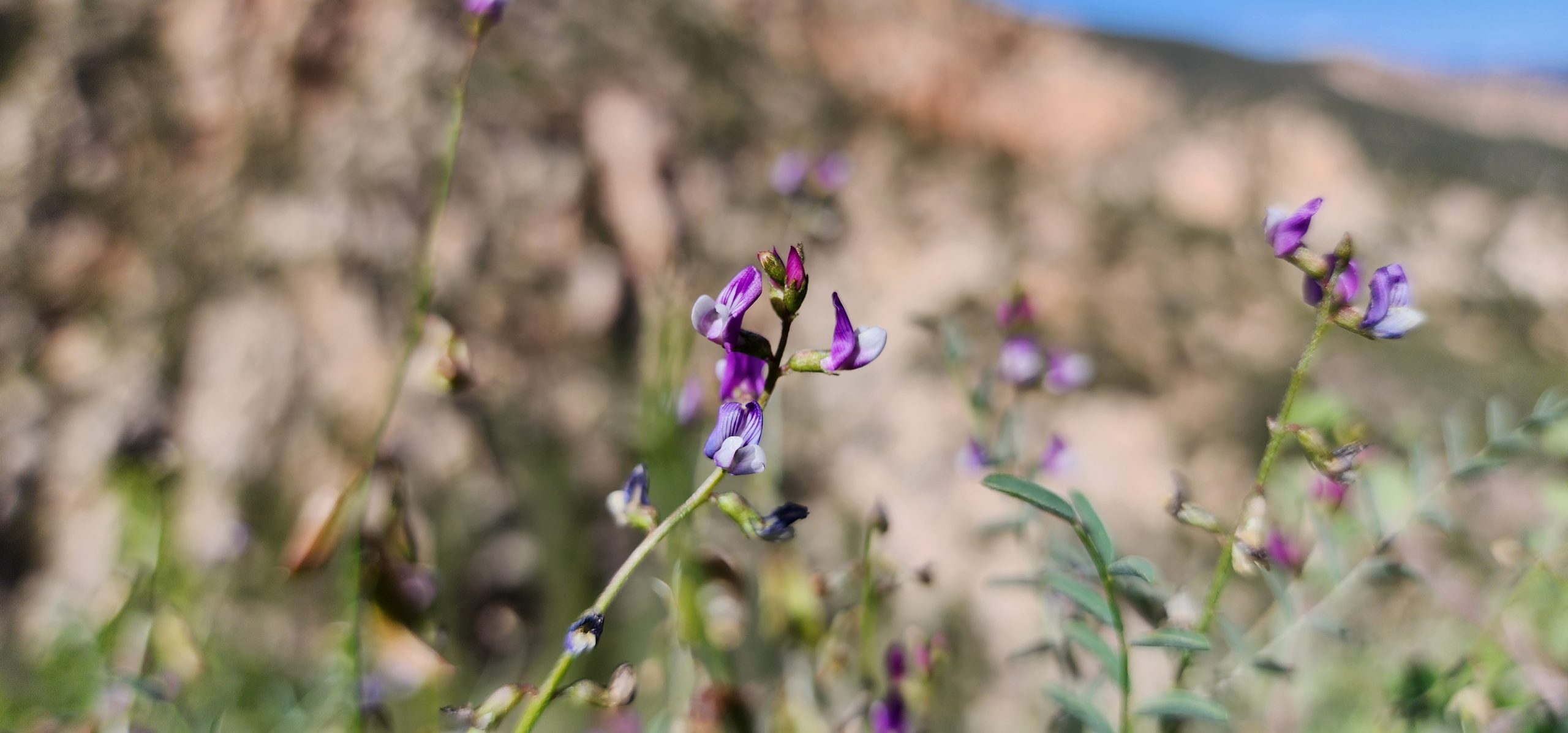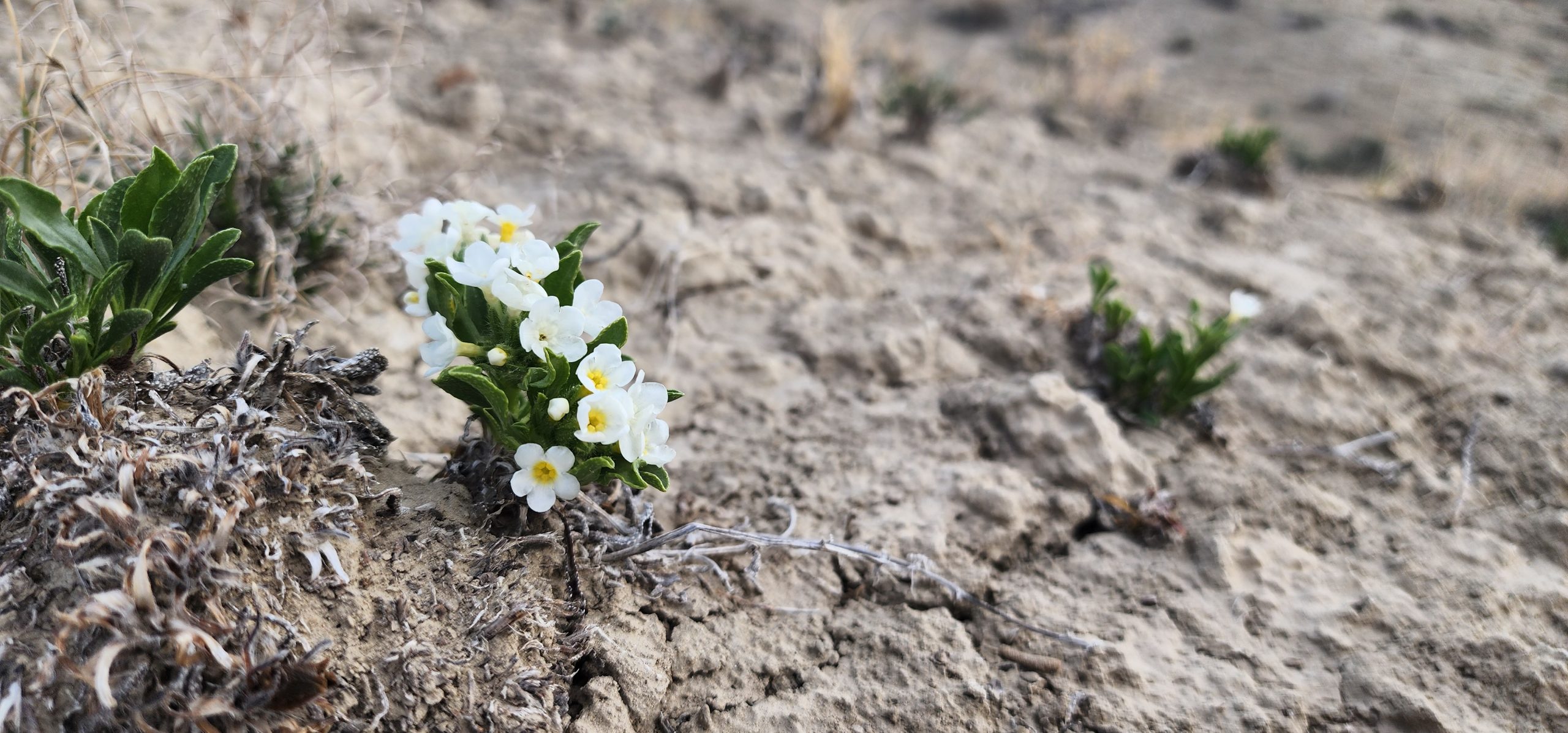Save Plants
Center for Plant Conservation
Of all the challenges biodiversity faces, climate change has emerged as one of the most pressing and potentially most impactful, with profound implications for the natural world. Among its many far-reaching consequences, climate change significantly impacts plants and their associated fauna. As temperatures rise and weather patterns shift, ecosystems experience alterations that disrupt the delicate balance between plants, animals, soils, and microorganisms.
Climate change affects plants in multiple ways, often cumulatively, including shifts in phenology, distribution range, and productivity. Such impacts can have cascading effects on the animals that depend on these plants for food, shelter, and other resources. For instance, changes in flowering or fruiting patterns may disrupt pollination and seed dispersal, reducing reproductive success for plants and their associated fauna. Moreover, rising temperatures and altered precipitation patterns can result in habitat loss, range contractions, and increased vulnerability to pests and diseases, impacting the diversity and abundance of plant-associated fauna. Understanding these complex interactions is crucial for developing effective strategies to mitigate and adapt to the consequences of climate change on rare plants.
In this issue, Denver Botanic Gardens shares insights into their research on the impact of warmer temperatures on the early life stages of alpine plant species; we’ll travel to Hawaii to explore the Lyon Arboretum’s work centered on climate change and rare plants; and we’ll learn how Bok Tower Gardens approaches Florida’s plant species resilience by modeling and predicting climate change patterns. We also celebrate Emily Griffoul as our July Conservation Champion, in honor of her commitment to the conservation of alpine species through her work at Betty Ford Alpine Gardens.
This critical research advances practical and effective approaches to climate change and all other challenges. CPC’s network of Conservation Partners—currently 74 institutions strong and growing—is uniquely poised to meet these challenges. We are grateful for your continued support of CPC and its outstanding network of organizations and individuals.
Yours in Nature,
Conservation & Climate Change: Preserving Colorado's Rare Alpine Plants
Climate change threatens plant biodiversity worldwide. Alpine species are particularly vulnerable, as temperature fluctuations are projected to be most severe in high elevation areas, which are warming faster than the global average. In the Rocky Mountains of Colorado, for example, snowmelt advanced 4.8 days on average per decade and November-May air temperatures increased by a median of 0.9°C per decade from 1978-2007.
Even small shifts in climate can have major consequences on phenology, plant-pollinator interactions, reproduction, fitness, and community composition. The limited space available for alpine plant species to migrate upward to track suitable climate, coupled with potential trait or phenological changes, may increase extinction risk. Understanding how climate change will impact alpine species—particularly those that are considered rare or threatened—is essential for effective conservation.
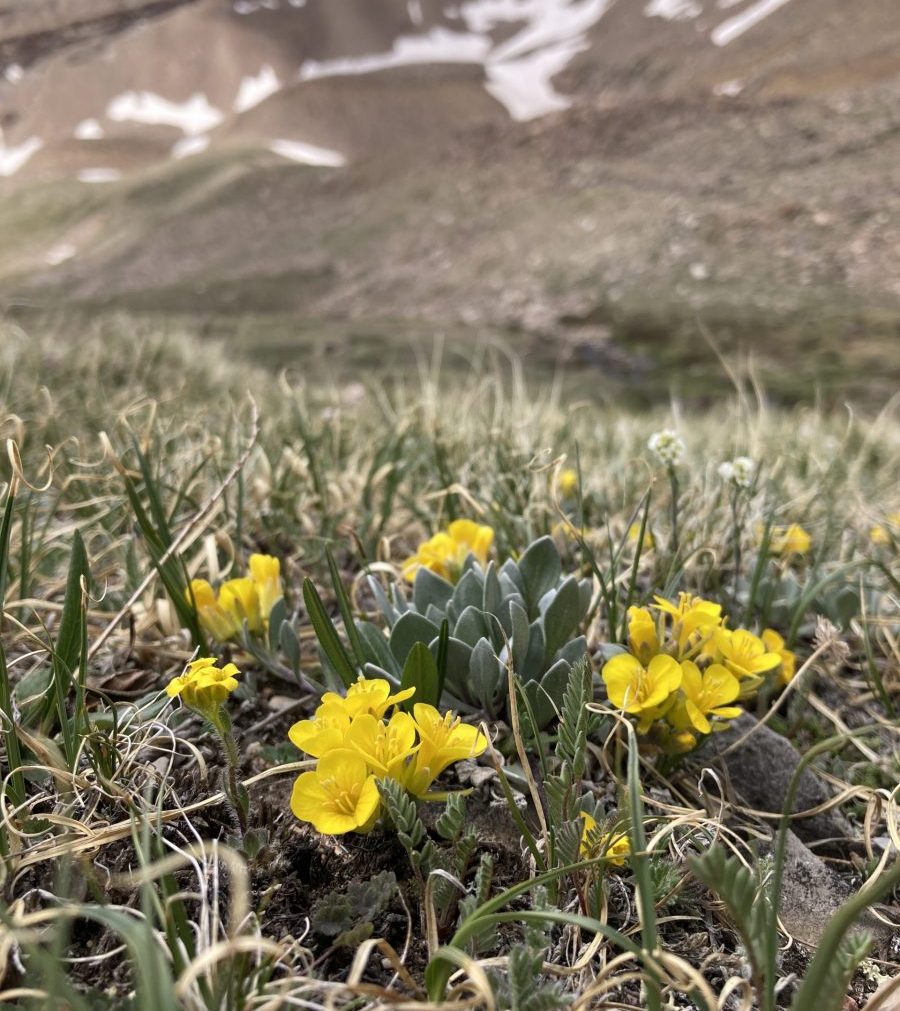
Early life stages (seed germination and seedling survival) are arguably the most important processes in not only the fitness of an individual plant, but also the dynamics and persistence of plant populations. These initial developmental stages—expected to be more vulnerable to changes in climate than adult life stages—may represent a major bottleneck to recruitment and population responses as climate change increases in severity. Identifying the impacts of warmer temperatures on early life stages of alpine plants will allow us to better prioritize conservation actions.
Alpine ecosystems are harsh and unpredictable environments that experience severe fluctuations in climate, both spatially and temporally. These conditions restrict the timing for germination and growth to occur and present challenging conditions for small seedlings. As the climate continues to change, these conditions may become more dramatic, changing the environmental cues the seeds receive. This may lead to the mistiming of germination initiation, resulting in seedling mortality.
I performed an experiment to understand how increased temperatures will affect the germination and seedling stage of two endemic rare Colorado alpine species—Avery Peak twinpod (Physaria alpina) and Rothrock’s Townsend-daisy (Townsendia rothrockii). Previous experiments showed that they germinate to high proportions after a period of cold stratification—mimicking the overwintering period after seed dispersal in natural conditions—followed by incubation at 20/10°C (12 h light/12 h dark).
These conditions are close to current conditions at the site and were used as the control. In test cases, temperatures were increased by 2°C (22/12°C) and 4°C (24/14°C) to simulate warming projections over the next century. Following a one-month germination period and growth of the first true leaves, the germinants were transplanted to soil flats and returned to the same conditions. Over the next two months, I collected data on the number of leaves and the length of the longest leaf for each individual seedling.
Overall, increased temperatures did not have a negative effect on germination proportion or seedling growth. In fact, germination was higher and seedlings grew larger for both species under the increased temperature treatments. These results aren’t too surprising, as alpine species typically need warm temperatures to germinate. By timing germination to coincide with late spring/early summer temperatures, plants can largely avoid being exposed to harmful weather events, such as a late frost or snow. Warmer temperatures may therefore be beneficial to early life stages of alpine plants.

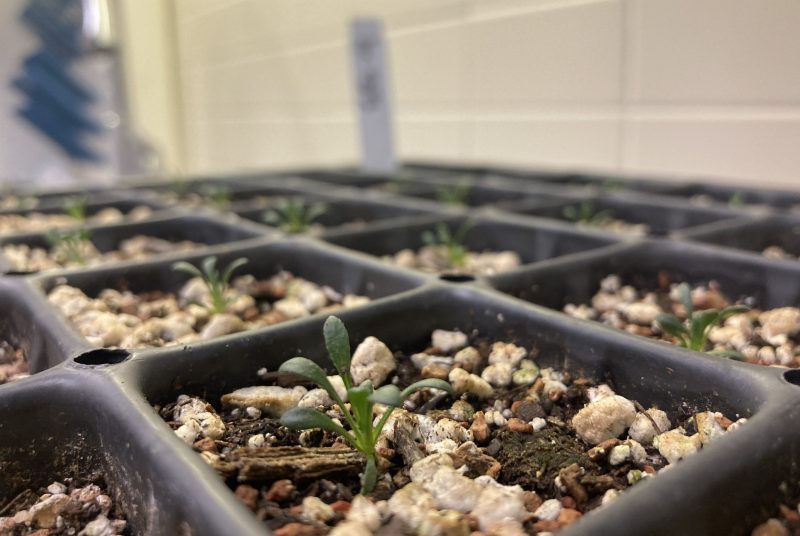
However, a threshold may exist beyond which warmer temperatures become detrimental to the plants. Further studies with higher temperatures will need to be performed to test this assumption. Additionally, warmer temperatures may benefit the early life stages of alpine plants but have negative effects on growth and reproduction at later life stages. Other climatic factors, including decreased snowpack and warmer winters, will likely have large effects on alpine species as well. But for now, we can offer a little hope that rare alpine species might be able to adapt to and survive warming temperatures.
Climate Change in Hawaii Makes Ex-Situ Conservation a State-Wide Priority
Hawaii is home to over 400 plant species listed as endangered by the United States Fish and Wildlife Service (USFWS). More than 250 of these species have less than 50 individuals remaining in the wild. Several factors contribute to the current status of rare plants in Hawaii, including habitat loss and degradation, invasive species, and wildfires—all of which are exacerbated by climate change. A 90% rate of endemism adds the extra challenge of limited geographic distribution. It is no wonder Hawaii is often referred to as the “plant extinction capital of the world.”
The compounding effect of climate change has created an extremely precarious state for the most vulnerable populations of Hawaii’s native plants. Extreme weather events have become more common—especially in higher elevations where most of Hawaii’s rare plant populations are found. Stronger weather swings generate increasing amounts of rainfall and more severe droughts. Heavy rainfalls benefit fast-growing invasive species of grasses, shrubs, and trees, increasing biomass in drought-prone areas. When droughts do hit, large swaths of land are therefore primed to go up in flame—along with any critically endangered populations of plants they contain.
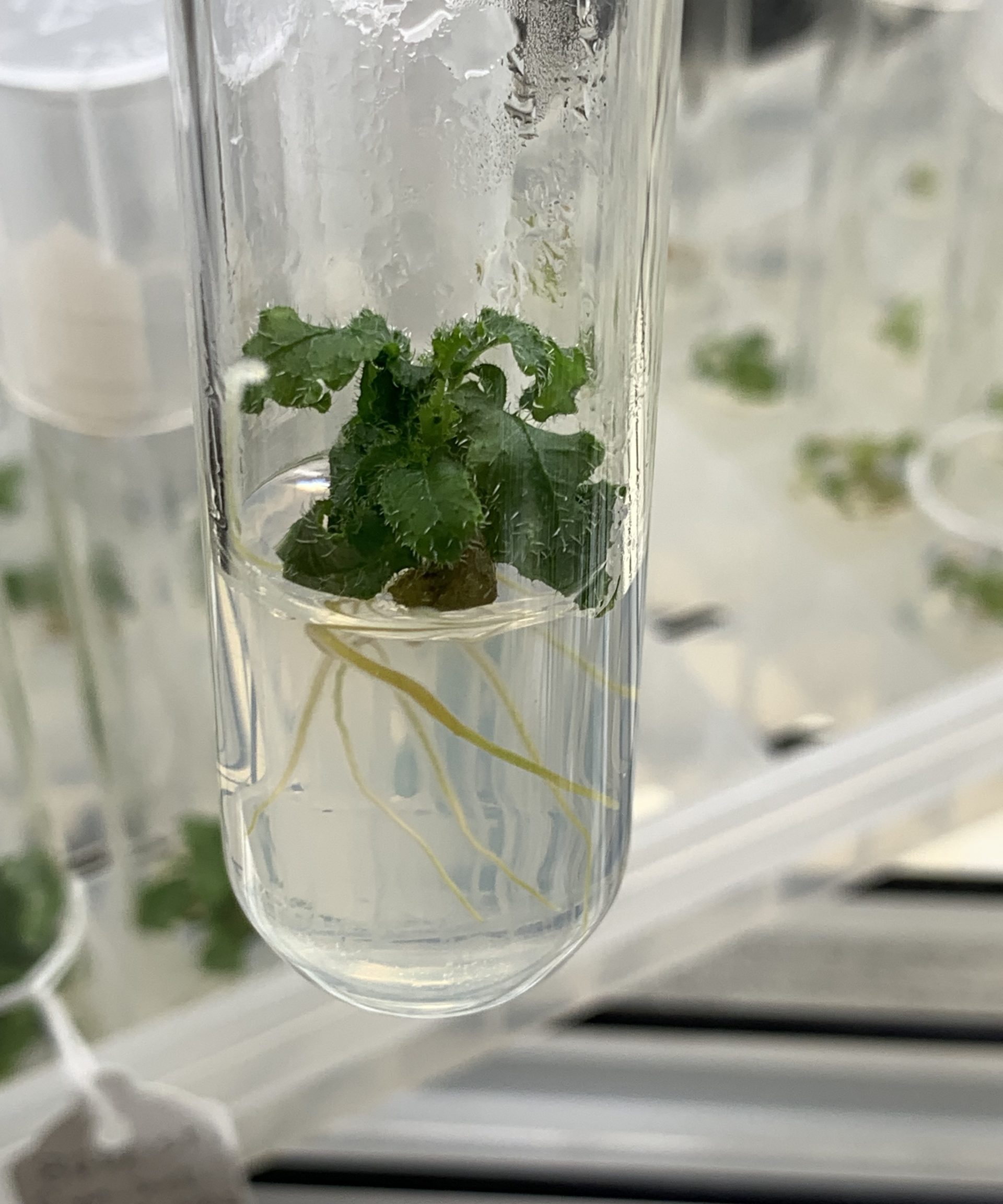
A recent example of climate-change-charged wildfires occurred in 2022 in drought-afflicted West Maui. Fueled by invasive guinea grass, nearly 2,100 acres burned—including habitats containing the only known occurrences of some of Hawaii’s rarest species, such as Cyanea heluensis and Stenogyne kauaulaensis. Fortunately, technicians at the Plant Extinction Prevention Program (PEPP) had made wild seed collections of C. heluensis and S. kauaulaensis prior to the blaze. These collections were used to establish ex-situ representation in the Micropropagation lab and the Seed Conservation Lab at the Lyon Arboretum Hawaiian Rare Plant Program (HRPP). If not for the ex-situ collections at the HRPP, these two species would likely have been lost forever.
Another unfortunate aspect of climate change in Hawaii is increasing temperature and its effects on wild populations of native species, especially at higher elevations. The average temperature in Hawaii has risen about 2°F since 1950. The combination of higher temperatures with climate change-related changes in weather patterns, invasive species, and habitat displacement has the potential to modify habitable ranges for many of the remaining wild populations of critically endangered Hawaiian plants. In most cases, this means a movement towards higher elevations. For plant populations with ranges that are already at or near the low-lying summits of the older Hawaiian Islands, upward movement is not possible. The prospect of rare plant populations being squeezed out of their historical habitats is a grim one—but we are not yet there. It is becoming more and more apparent that ex-situ conservation actions provide the only solution to minimize the loss of Hawaiian plant species.
As the effects of climate change intensify in Hawaii, related extirpation events will become more common. Luckily, nearly 70% of the critically endangered plants in Hawaii are secured in ex-situ storage at the HRPP. Representatives of these rare species are held either as seed in the seed lab or as in-vitro and cryopreserved collections in the Micropropagation Lab. In collaboration with its partners, the HRPP has secured over 30 million seeds in conventional seed storage and over 40 thousand living plants in in-vitro storage. Despite the inevitability of some species facing extirpation from the wild under mounting pressure from climate change, ex-situ conservation now assumes a critical role as the last line of defense against extinction for Hawaii’s rarest plants. The weapons in this battle include technologies such as seed banking, plant tissue culture, and cryopreservation. With the ongoing efforts of the HRPP and its partners, we have hope for the survival and future reintroduction of Hawaii’s endangered plant species.
Studying Potential Effects of Climate Change on Rare Plant Populations
Bok Tower Gardens’ Rare Plant Conservation Program works to preserve the rarest plant species of Florida through biological and ecological research that enable us to better understand each species. Conservation efforts include collecting seeds to preserve genetic material in an ex situ collection, introducing new populations into protected sites, rescuing rare plants from development sites, restoring habitats, enlisting the public to promote local stewardship, and helping to train the next generation of conservationists through student projects and internship opportunities. Although this work often targets immediate preservation needs, our focus is increasingly shifting to best strategies for preserving species many decades into the future.
A changing climate is expected to significantly impact ecosystems and species. Predicted alterations in seasonal rainfall levels and temperatures may have direct implications for plant population dynamics and the conditions of their habitat. Adapted to limited niches within narrow ridge systems, many of Florida’s endangered plant species will not be able to migrate to higher latitudes, higher elevations, or other areas of suitable habitat in response to climate pressures. Seedling recruitment and survival, as well as reproductive timing and output, could be heavily impacted with changing weather patterns. Understanding how to best support species resilience in a world impacted by climate change will be necessary to long-term preservation of species in the wild.
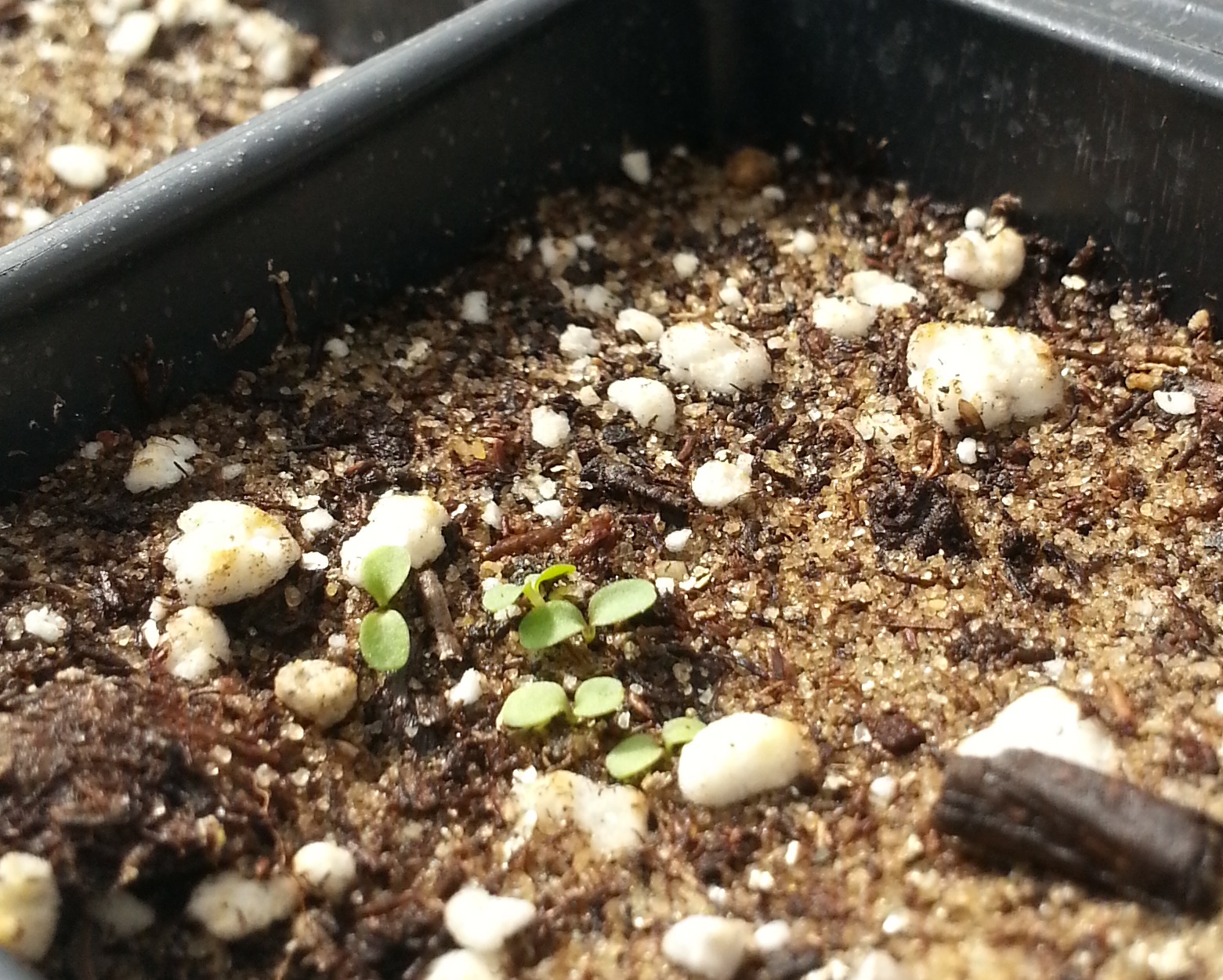
A key factor in climate change adaptations is the selection pressure that can lead to an altered composition of genotypes comprising a population. To investigate this, we performed germination trials under controlled conditions in a dual-chamber seed germinator. In identical trials, seeds from different maternal parents are subject to ‘current’ daytime and nighttime temperatures in one side of the germinator, and to ‘projected’ temperature conditions in the other side of the germinator. The projected conditions are based on a 50-year ‘moderate emissions’ scenario for the region, available at ClimateWizard.org . Current and projected rainfall levels are also simulated through hand-watering regimes.
We observed substantially different temperature responses for Clasping warea (Warea amplexifolia), located on the Lake Wales Ridge, and for Lakela’s Mint (Dicerandra immaculata var. immaculata) and Savannas Mint (D. immaculata var. savannarum), located in separate areas along the Atlantic Coastal Ridge. Some maternal lines with typically low germination rates showed markedly higher rates with increasing temperature. Other maternal lines with typically high germination rates (at or near 100%) dropped to zero.
Nearly all genotypes showed some influence of temperature in these trials. Overall, germination rates increased with increased temperature, although these trials did not account for any requirement for low winter temperatures that seeds of these early-spring germinating species often experience.
Actual effects of climate change on germination rates are likely to be complex. Any increase in germination in the wild that may occur with increased temperatures is expected to be offset by the predicted lower spring rainfall levels. In our germination trials, reducing irrigation levels to mimic expected lower rainfall levels led to greatly increased seedling mortality. This mortality was consistent across maternal lines and did not vary across genotypes. Therefore, although it might be possible to select for higher temperature-resistant genotypes, reduced seedling survival due to lower spring rainfall levels may be catastrophic for some of central Florida’s rare plant population.
Invasive species provide another complication. In our trials, increased temperatures led to increased germination of weed seeds in native soils used in the seed-sowing media. This suggests that predicted higher temperatures with climate change may speed up degradation of habitats by an increase in invasive species. As habitat degradation is thought to be the biggest threat to the persistence of species in the wild, habitat restoration and maintenance will likely be more urgent over time.

Conservation efforts to undertake the best strategies based on these findings are underway in Florida, in partnership with numerous governmental and non-profit organizations, universities, and volunteers from the general public. We are implementing population introductions to establish large, diverse populations that include the most resilient and adaptable maternal lines. Decades of demographic data and historic rainfall and temperature records are being used to model future population trends. Volunteers work monthly to improve habitat for several populations of the most critically endangered species. These research and field conservation efforts will help to ensure the survival of rare Florida plant species in the wild for many years to come.
Emily Griffoul
Our July Conservation Champion, Emily Griffoul, is dedicated to the conservation of rare and endangered alpine plant species through her work at Betty Ford Alpine Gardens. These vulnerable alpine species face severe impacts from climate change and other threats, which must be countered in order to protect the plants that call these special high-elevation habitats home. Emily’s work centers on the North American Strategy for Alpine Plant Conservation–a blueprint for the protection of alpine plants, with a focus on the role of botanic gardens in their preservation. As Emily states, “saving rare and imperiled plants is a collaborative effort that necessitates a lot of people, institutions, skills, and motivations.” We are grateful to have Emily as a partner in our shared mission to Save Plants from extinction.
When did you first fall in love with plants?
I’ve always loved being outdoors, and I was lucky enough to spend a lot of time in my family’s gardens growing up. Looking back, it seems almost fated that I would end up at a botanical garden! One of my earliest memories is of visiting the beautiful Longwood Gardens, which really made an impression on me. Growing up in California, I also had the opportunity to explore many different ecosystems, from the rolling oak woodlands of the Bay Area to majestic coastal redwoods to the mountains of the Sierra Nevada. I believe this sparked my interest in ecology even before I knew what that meant.
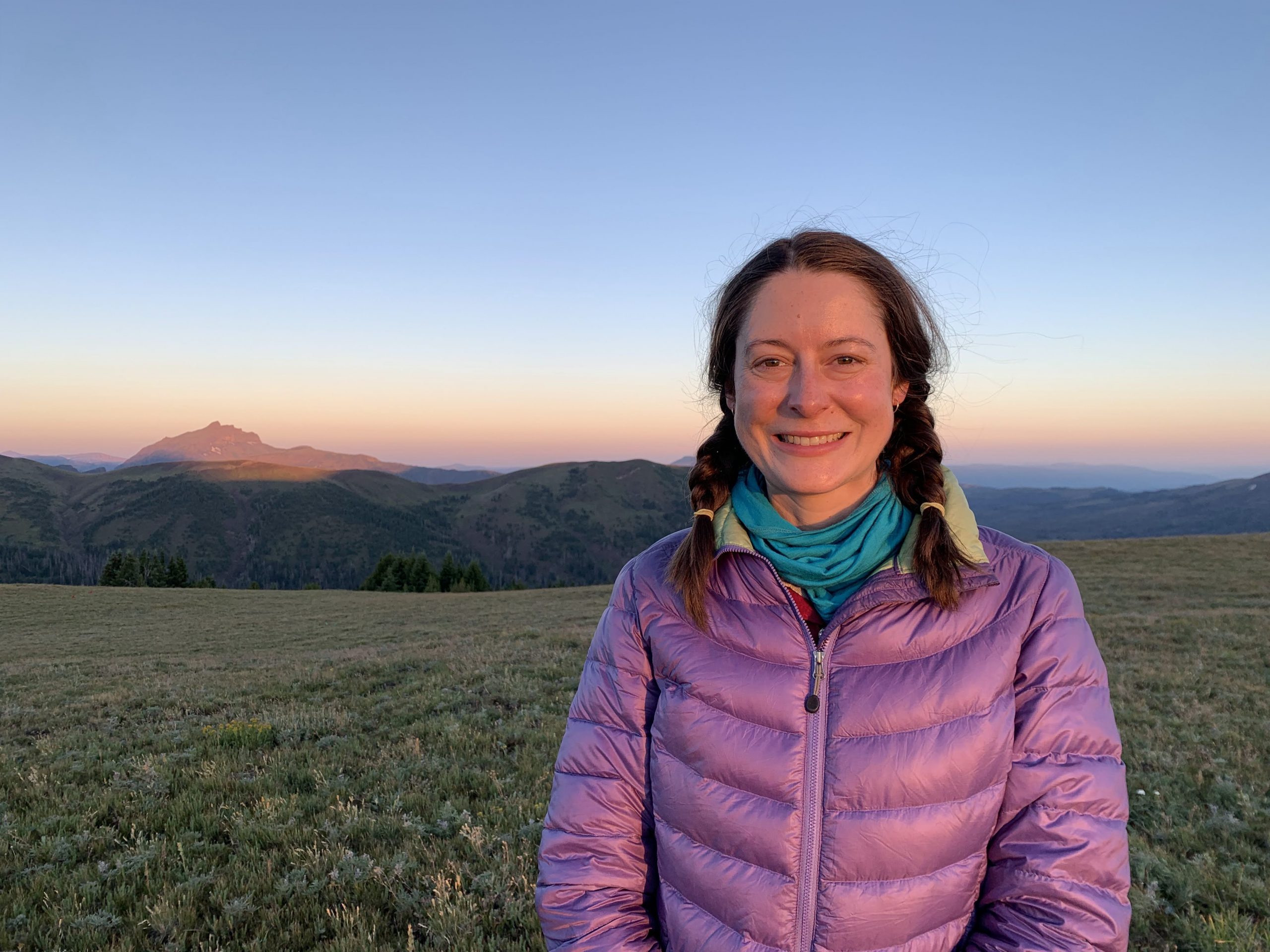
What was your career path to Betty Ford Alpine Gardens?
I attended Colby College in Waterville, Maine, partly because of the strong environmental science and biology programs. There, I took a Woody Plants course with Dr. Judy Stone, which sounds like it could be brutal—identifying trees by bark in a Maine winter? But I was hooked. I loved being outside and getting to know plants on a whole new level. Dr. Stone also hired me for my first job out of college, working in Costa Rica to observe pollinators in common gardens at different elevations. Through this experience, I fell in love with field work and hands-on science, and it cemented my decision to pursue a career in ecology.
After an internship with the Conservation and Land Management program at Chicago Botanic Gardens and a stint at the USGS conducting vegetation surveys in the Mojave desert—where I was amazed by tiny, specialized plants adapted to an incredibly harsh environment—I headed to graduate school at the University of California, Irvine. I received a Master of Science degree in Ecology and Evolutionary Biology, focused on ecophysiology and the mechanics of invasion ecology.
Following school, I moved to Chicago, working as a research assistant at the Morton Arboretum in the Center for Tree Science, where I set up a sensor network to monitor tree sap flow and phenology. However, I’ve always loved the West, and I became interested in alpine plants for similar reasons as desert plants: they are small, tough, and adapted to a brutal climate. I was thrilled to join Betty Ford Alpine Gardens in 2020 as the Conservation Scientist, where my main role is to implement the North American Botanic Garden Strategy for Alpine Plant Conservation.
In your experience, what are some of the pressing conservation needs impacting North America’s rare and native alpine plants?
While there are many threats to alpine plants—including recreation, development, and mining activity—climate change is by far the most significant. This is a threat that transcends national and conservation boundaries. No plant is immune, whether in a garden collection, a wilderness area, or on national forest land. The alpine ecosystem faces a unique set of challenges, warming faster than other terrestrial ecosystems, and rare alpine plants are in danger of losing their habitat or being outcompeted by lower-elevation species making their way into this previously inhospitable region.
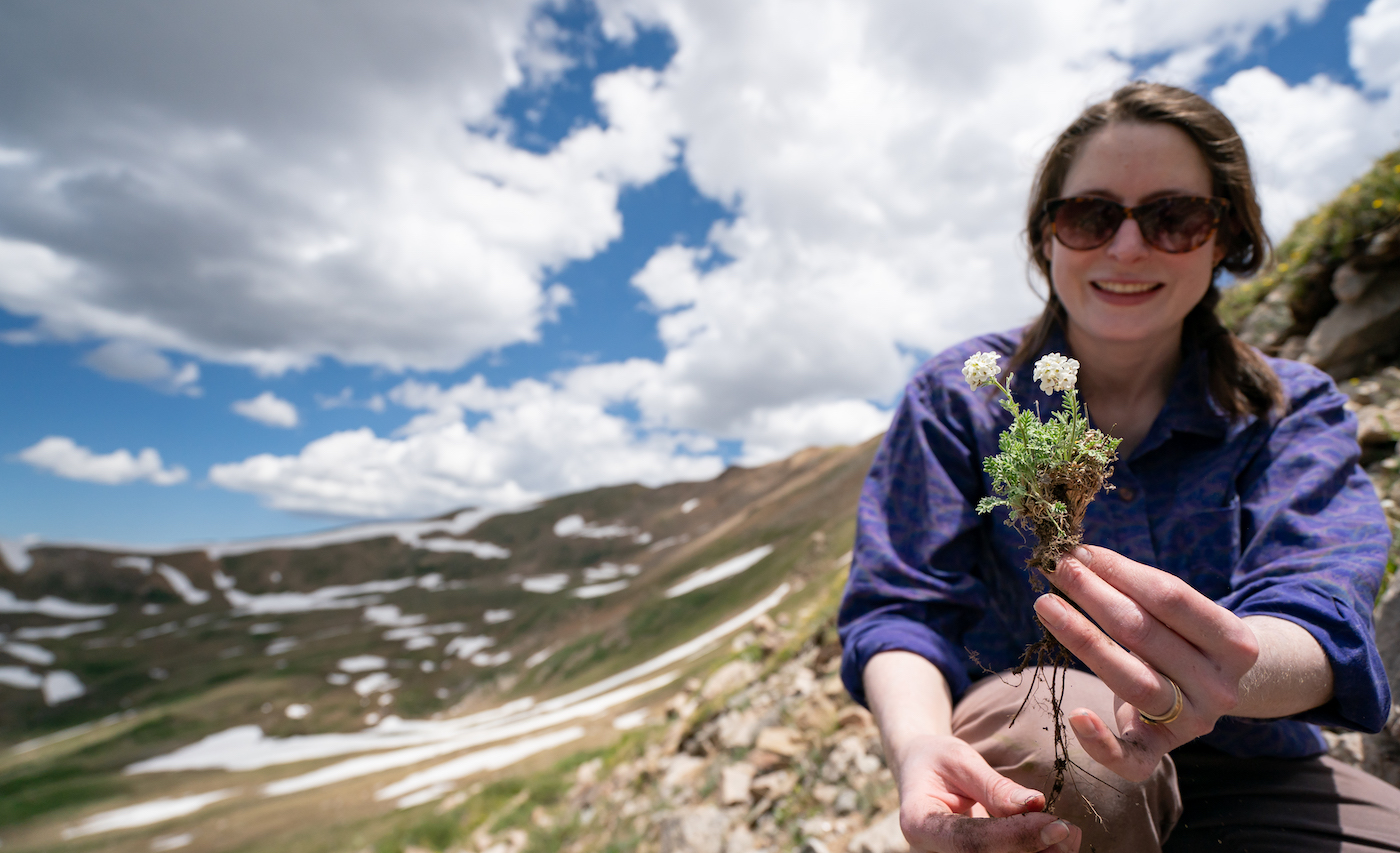
What conservation project(s) are you currently working on? What successes or challenges have you encountered in your work?
My work here at the Gardens focuses on the North American Strategy for Alpine Plant Conservation—a blueprint for the protection of alpine plants, with a focus on the role of botanic gardens. Through understanding and documenting alpine plant diversity and performing in-situ and ex-situ conservation projects—including seed banking, habitat monitoring, and building connections across institutions—we aim to conserve and protect alpine plants in response to the threats they face. Botanic gardens are at the intersection of science and the public, and they play an important role in advocating for the alpine and specialized plants that call these high-elevation habitats home.
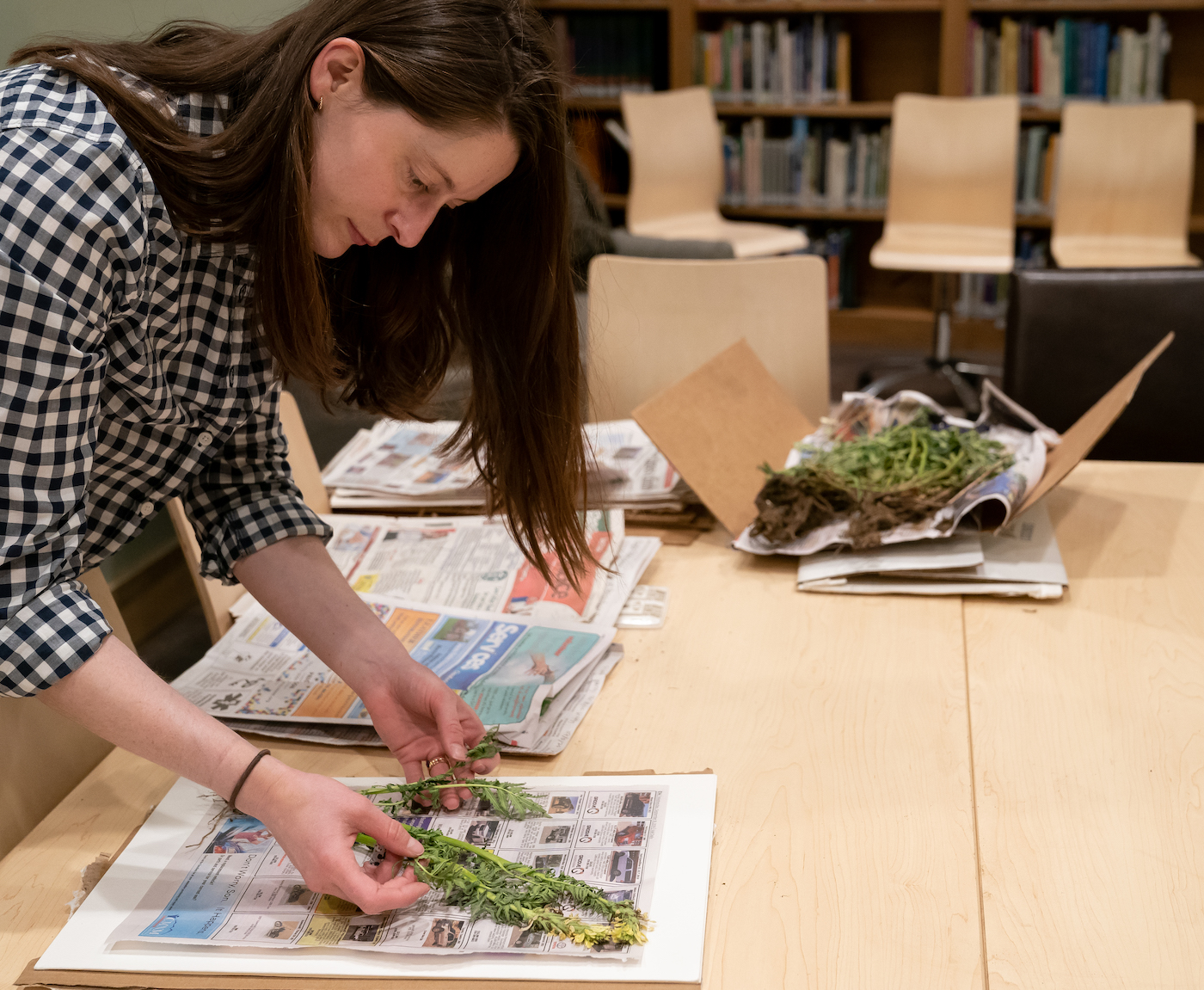
What conservation project(s) are you currently working on? What successes or challenges have you encountered in your work?
My work here at the Gardens focuses on the North American Strategy for Alpine Plant Conservation—a blueprint for the protection of alpine plants, with a focus on the role of botanic gardens. Through understanding and documenting alpine plant diversity and performing in-situ and ex-situ conservation projects—including seed banking, habitat monitoring, and building connections across institutions—we aim to conserve and protect alpine plants in response to the threats they face. Botanic gardens are at the intersection of science and the public, and they play an important role in advocating for the alpine and specialized plants that call these high-elevation habitats home.
What advice would you give to those who wish to learn more about how they can help save imperiled plant species?
Making connections across institutions and disciplines is essential. Saving rare and imperiled plants is a collaborative effort that necessitates a lot of people, institutions, skills, and motivations. Plus, I think it is so important to mentor the next generation of botanists and ecologists! I have been incredibly lucky to have mentors and teachers give me a chance to explore hands-on field work, and it truly has changed my life.
National Collection Spotlight: Correll’s False Dragonhead
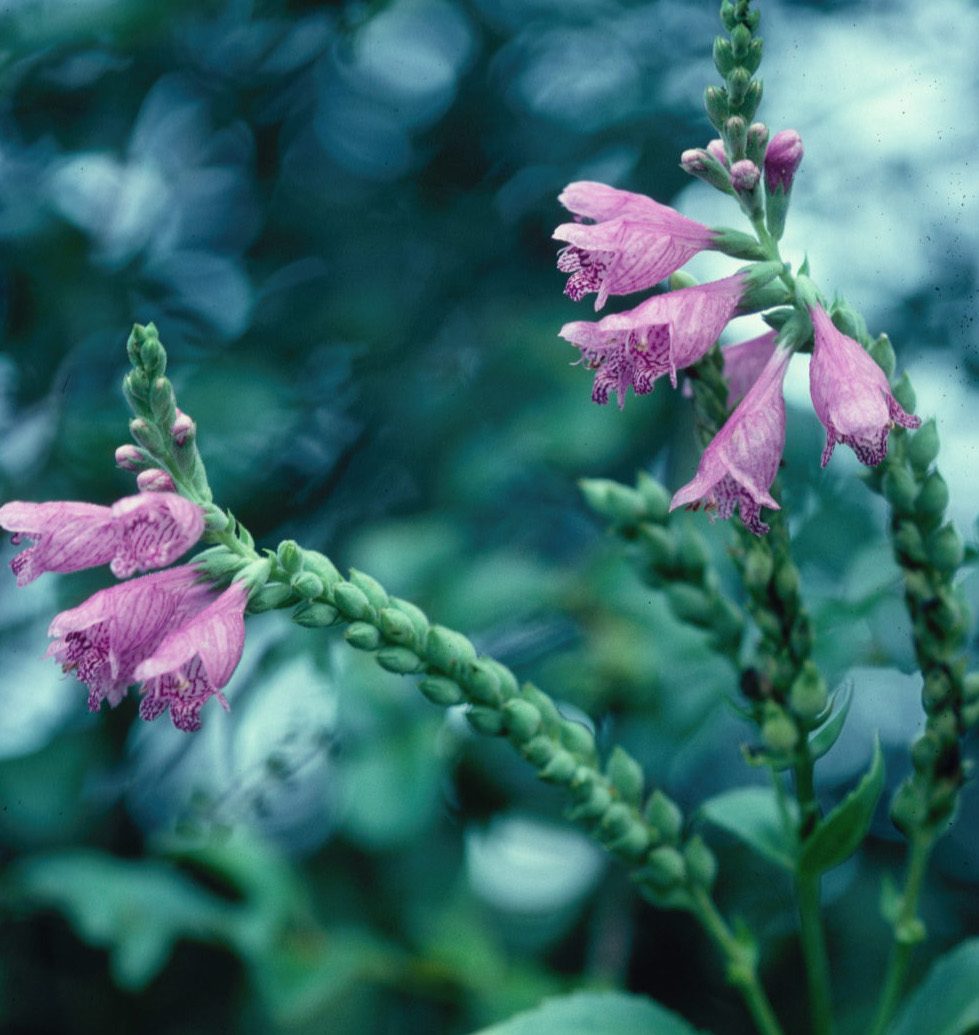
Correll’s False Dragonhead (Physostegia correllii) is an imperiled species native to southern Louisiana and Texas, extending into northern Mexico. With less than 15 known occurrences, this rare species is a candidate for listing under the federal Endangered Species Act. Maintenance of genetic integrity, documentation of provenance, and gene banking are therefore essential in ex situ conservation collections.
Correll’s False Dragonhead is secured in the CPC National Collection at Mercer Botanic Gardens, where the species is held in orthodox seed banking and living collection. Mercer Botanic Gardens also has extensive experience with propagation research and protocols for this species. Some of the seed held at Mercer dates back to 1988–part of a collection from wild populations of the plant in Cameron Parish, LA.
Learn more about conservation actions taken for Correll’s False Dragonhead on its National Collection Plant Profile, and help support critical conservation work for this species with a Plant Sponsorship.
As Seen on CPC’s Rare Plant Academy: Florida’s Key Tree Cacti (Pilosocereus robinii and Pilosocereus millspaughii): Charismatic Megaflora at the Forefront of Sea Level Rise
Dense stands of columnar ‘tree cacti’ similar to those in the Greater Antilles were once found in the Florida Keys, but harvesting, habitat loss, damage from mammals, climate change, and sea level rise led to a population crash that landed the cactus on the US endangered species list in 1984. In this Rare Plant Academy video recorded at the 2022 CPC National Meeting, Jennifer Possley presents the efforts of Fairchild Tropical Botanic Garden (FTBG) to conserve the Key tree cacti of the Florida keys. Since the mid-2000s, the conservation team at FTBG has worked hard to recover, restore, and secure ex situ material of these populations. Their work has included the establishment of a Key Tree Cactus Preserve; annual, range-wide population monitoring; in situ ecological studies; an ex situ salinity study; development of horticultural methods; seed banking; plant rescues; genetic research; and several experimental reintroductions to relatively higher-elevation sites throughout the species’ natural range.
Watch this video—and check out the “climate change” tag on the Rare Plant Academy Video Library to watch many more videos and presentations focused on climate change and conservation!
Get Updates
Get the latest news and conservation highlights from the CPC network by signing up for our newsletters.
Sign Up Today!Ways to Help CPC

Conservation Advocacy Initiatives
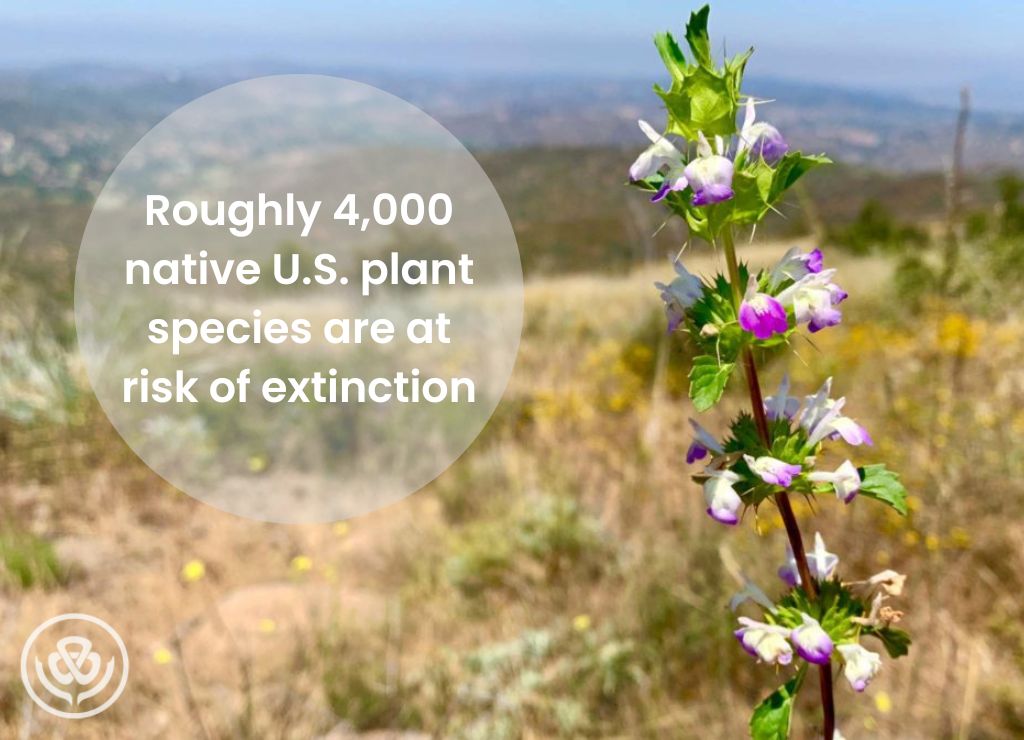
The Center for Plant Conservation (CPC) advocates for rare plants by providing a leadership role in conservation education, awareness, and action. The Center for Plant Conservation (CPC) takes a stance on issues based on the guidelines and parameters of its Position Papers on “Threatened and Endangered Native Plants” and “Climate Change.”
CPC’s Position Paper on Climate Change addresses the need to protect imperiled plants against the dire consequences of climate change, and outlines the solutions CPC supports to combat the effects of climate change. Learn more about CPC’s advocacy initiatives and Position Paper on Climate Change.

Donate to Save Endangered Plants
Without plants, life as we know it would not be possible. Yet two in five of the world’s plants are at risk of extinction. More than ever before, rare plants need our help!
That is why all of us at the Center for Plant Conservation (CPC) are deeply grateful to have you as part of our conservation community. Your generous and unyielding support allows CPC and our network of world-class botanical institutions to make great strides in our shared mission to Save Plants from extinction.
Your gift ensures CPC’s meaningful conservation work will continue. Together, we save more plants than would ever be possible alone—ensuring that both plants and people thrive for generations to come. We are very thankful to for all that you do to help us Save Plants!
Donate to Save Plants Today!
Donate to CPC
Thank you for helping us save plant species facing extinction by making your gift to CPC through our secure donation portal!
Donate Today